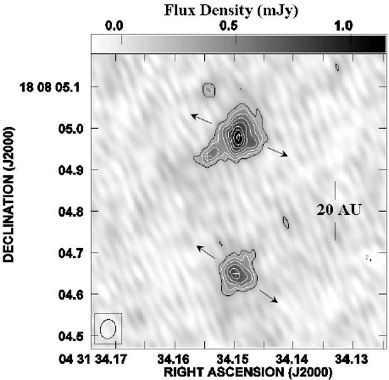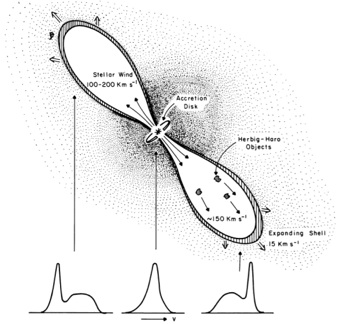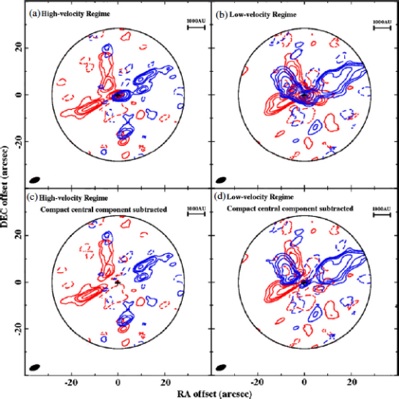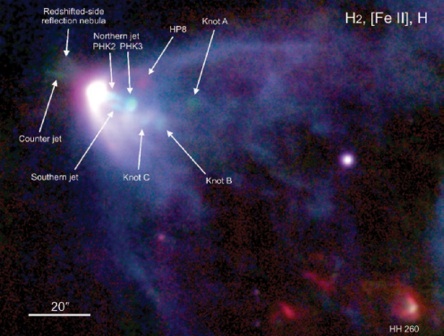
Star Formation and Outflows in L1551 IRS5
L1551, named after catalogued almost fifty years ago by Lyons (1962), is a dark cloud with a diameter of ~20′ (~1 pc) located at the south end of the Taurus molecular cloud complex, at a distance of ~140 pc. The dark cloud is associated with many young stellar objects. These YSOs show various outflow activities and characteristics such as optical and radio jets, Herbig-Haro objects, molecular outflows, and infrared reflection nebulae.
Protostellar Population in IRS 5
Among the YSOs in L1551, the IRS 5 region is particularly interesting and studies of it continue to the present day. The name comes from the infrared source found by Strom, Strom and Vrba (1976) in this region. Its luminosity and infrared colors is consistent with a B star redden by an AV of ~20 mag.

However it is not so long before we found the multiple stellar system in IRS 5. Rodriguez et al. (1998), using the Very Large Array (VLA), showed that it was in fact a close binary pair of protostars separated by only 45 AU, or slightly more than the Sun-Pluto distance. Around each component, VLA images revealed an orbiting dust disk, extending out to 10 AU, or about as far as the orbit of Saturn. Moreover, Lim & Takakuwa (2006) pointed the VLA to IRS 5 again, but at a higher sensitivity, and found a third possible protostar close to one of the binaries, turning it into a triple system. Their VLA image on the left clearly shows the three peaks.
Molecular Outflows
It is indeed exciting to directly capture the protostars, but it is also fascinating to view the outflows around them, especially for such a complex stellar system: ideally each of the protostar should drive at least one pair of bipolar outflows, so it’s gonna to be a rhapsody in blues and reds!

The pioneer work is done by Snell, Loren and Plambeck (1980), who mapped the double-lobed molecular structure traced by 12CO, and found the large-scale outflows.
On the right is a schematic drawing of the wind-driven model of molecular outflows in Snell et al. 1980. The high-velocity stellar winds (100-200 km/s) originating from the accretion disk accelerate the molecular gas and create the HH objects on the way. However at that time the collimated jets from the disk were not noticed yet. Later we will learn it that the outflows might also be driven by the high-velocity jets.

Collimated Jets
